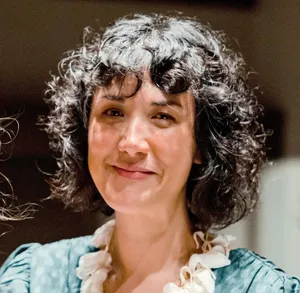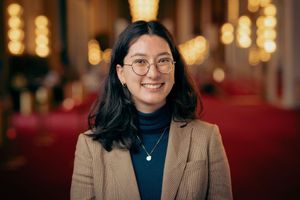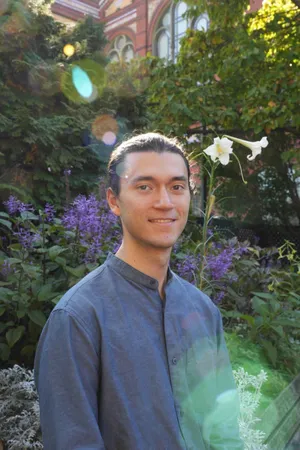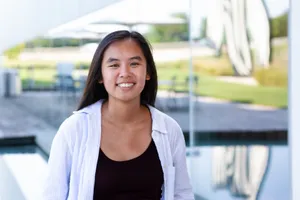A Deep Dive Into D.C. Chinatown’s History With Educators and Visitors
Museum educators from the Smithsonian Asian Pacific American Center share reflections about the “Sightlines” exhibition and its unique approach to honing in on the power of place
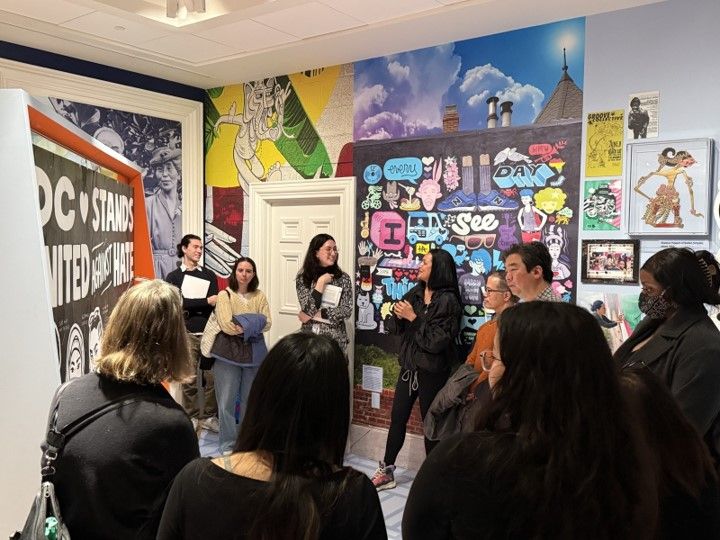
What is Sightlines: Chinatown and Beyond?
The Smithsonian Asian Pacific American Center (APAC) opened its first exhibition in over a decade at the Smithsonian American Art Museum (SAAM) in September 2024. Sightlines: Chinatown and Beyond tells the story of Asian American connections to Washington, D.C. through objects, archival materials, and works of art. Sightlines feature stories highlighting Chinese, Korean, Javanese and American experiences in D.C., and how architects, artists, and community leaders have cultivated and forged a sense of belonging in the city. The exhibition also dives into key intersecting histories where Asian and African American communities came together through teaching and learning the martial arts. The exhibition’s three central themes of, “Making Place,” “Transforming Tradition,” and “Visualizing Identity,” provide visitors of all ages with the opportunity to consider how our local, Washington, D.C. communities, are deeply interconnected with the rest of the nation and the world. This article presents a snapshot of how the Education Team at APAC engaged with visitors through programs, and soon, a new virtual tour.
Engaging with Educators and Lifelong Learners
The APAC Education team offers tours of Sightlines for K-12 teachers, students, and any group interested in learning more about D.C.’s Chinatown. Every tour of Sightlines starts with an orientation, starting with observing a vinyl map of the Chinatown neighborhood covering the center of the exhibition floor. The map shows visitors how close they actually are to the neighborhood, which is just across the street from the museum.
Across student field trips, teacher workshops, and public programs, the hyperlocal nature of Sightlines' stories fostered opportunities for visitors and participants to meaningfully engage with little-seen objects from the Smithsonian’s collections, paired with objects from community members’ personal collections.
For example, on taking a group of DC Public Schools teachers through Sightlines, a picture of Soo Woong Lee with students sparked powerful memories for some teachers about the D.C. martial arts community. Some teachers shared childhood memories about martial arts movies they watched, and family members who practiced martial arts. During a facilitated activity in the exhibition, one teacher in this group observed the picture of Soo Woong Lee for some time, quietly reconnecting with their own childhood memories in D.C.
/https://tf-cmsv2-smithsonianmag-media.s3.amazonaws.com/filer_public/97/46/9746a679-7698-4a45-b21b-bff6cd0f8f7a/sightlines2.jpg)
The APAC Education team offers a tour and a thematic craft activity in the exhibition every second Saturday of the month. During these tours, visitors have had opportunities to hear from artists and community members represented in Sightlines, such as artist and muralist Cita Sadeli, who spoke with visitors about her years growing up in the D.C. area, and how her Javanese heritage, love for D.C.’s music scene, and commitment to justice inspires her artistic approach to her murals.
For visitors, their personal connections to the objects, narratives, and histories on view led to surprising in-depth conversations creating parallels between the history of D.C. and other localities. For example, beyond telling visitors about an unsuccessful plan to establish a pan-Asian food court in D.C. Chinatown during the 1980s, the story evolved into a conversation about new developments being established in visitors' own cities, such as a proposed sports complex bordering Philadelphia’s Chinatown, paralleling the history of D.C.’s convention center, which resulted in the displacement of hundreds of Chinatown residents.
/https://tf-cmsv2-smithsonianmag-media.s3.amazonaws.com/filer_public/f5/f7/f5f71ed2-2cc2-44b4-8381-fa3f5d8da7a4/sightlines3.png)
Engaging with Visitors Beyond D.C.
We have seen visitors of all ages and from around the nation and world visit Sightlines in person; however, we understand the value of presenting the exhibition to visitors who may not have the opportunity to visit D.C. APAC is currently developing a virtual 3D tour, available on APAC’s website later this year, of Sightlines to expand our reach to visitors. In the 3D tour, visitors will be able to see Sightlines virtually even after it closes in November this year. The virtual tour preserves the design aspects of the exhibition for visitors while also enriching the virtual experience through exclusive audio interviews with artists, community members, and staff involved with the exhibition
/https://tf-cmsv2-smithsonianmag-media.s3.amazonaws.com/filer_public/35/fc/35fc716f-5873-4746-be5c-e404755f055c/sightlines4.png)
The virtual tour’s exclusive audio interviews highlight how local stories can make a global impact. The interviews aim to maintain the spirit of local, intimate storytelling, where listeners can hear individual and family histories. For example, we learn how a Filipino family came to live in D.C. after the Philippines was annexed by the United States; how a Japanese American family arrived in D.C. to start a new chapter after the incarceration camps of World War II closed; and how a single Javanese mother raised her four children in D.C. after studying on a Fulbright scholarship. As we listen to these stories and see the virtual tour, we hope viewers will gain an awareness and appreciation for these historical events in Asian American history as critical events that effected everyday people in our own local communities.
Reflections and Reactions
“I knew about the martial arts component [in Sightlines] because of my dad who was a Veteran, but I hadn’t realized how many servicemen got into martial arts.”
“I’ve seen that mural [by Cita Sadeli] before, but I had no idea who made it.”
These are just some reactions we received from visitors to Sightlines, which reveal, to some degree, a level of surprise to what is on view in the exhibition, and how some visitors connected the stories and objects to their own lived experiences and observations of their community. While we still have some months to go before Sightlines closes in November this year, we continue to learn more about how educators and visitors are connecting their local stories to D.C.'s, and how Asian and African American stories in D.C. have long-lasting impacts of cross-cultural exchange and community building—a hyperlocal story that is very uniquely D.C.
Editor's Note: Join the authors for the 2025 Smithsonian National Education Summit on July 15-17. The APAC education team will offer an exhibition tour experience tailored to educators' needs on Wednesday, July 16 at 2:00 p.m., Eastern. More information about the session line-up and free registration is available here: https://s.si.edu/EducationSummit2025

